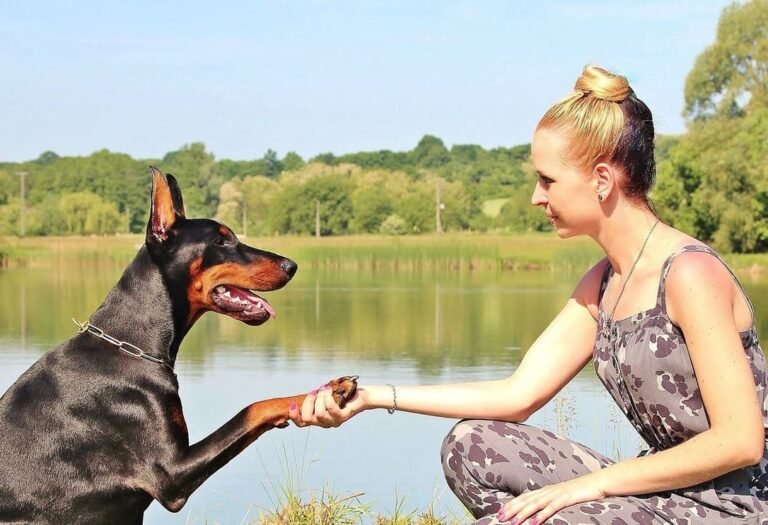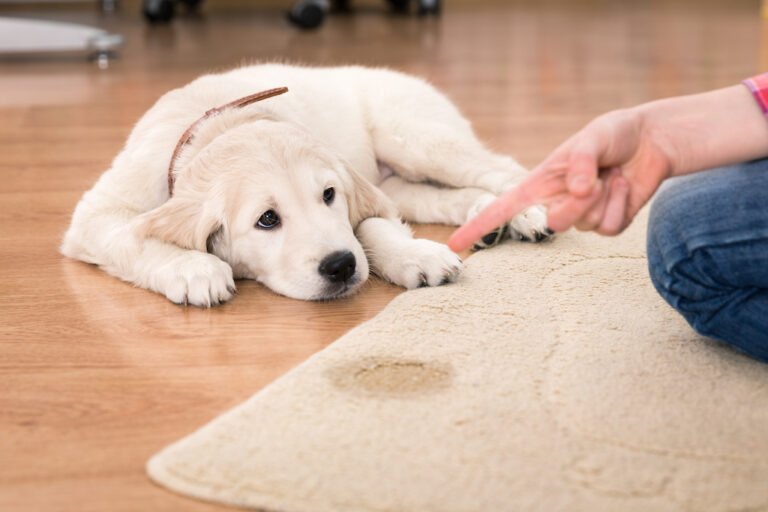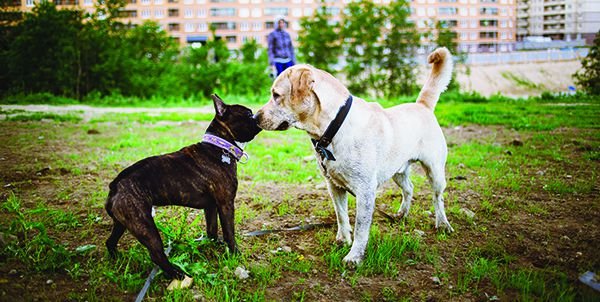How To Prevent Your Dog From Getting Fleas
How do I keep fleas off my dog?
Keeping fleas off your dog and preventing infestations involves a combination of regular preventive measures and prompt action. Here are steps to help keep fleas away from your dog:
- Use Flea Preventatives: Consult your veterinarian to determine the best flea preventive product for your dog. Options include topical treatments, oral medications, and flea collars. Follow the recommended dosages and application instructions, and use these products as directed.
- Regular Grooming: Regular grooming can help you spot fleas early and remove them before an infestation occurs. Brush or comb your dog’s fur, paying special attention to areas where fleas tend to hide, such as around the neck, tail, and ears. Use a flea comb to catch and remove adult fleas.
- Frequent Baths: Bathing your dog with a flea-specific shampoo can help eliminate existing fleas. Be sure to use a shampoo that is safe for your dog’s age and breed. Consult your veterinarian for recommendations.
- Environmental Control: Fleas can infest your home as well. Regularly vacuum your home, especially areas where your dog spends time, such as carpets, rugs, and furniture. Wash your dog’s bedding and any other fabric items they come into contact with in hot water. Consider using a household flea spray or fogger if you have a severe infestation.
- Yard Maintenance: Keep your outdoor environment clean and well-maintained. Fleas can hide in tall grass, so mow your lawn regularly. Remove debris and clutter from your yard, as these can provide hiding places for fleas.
- Regular Check-ups: Schedule regular vet check-ups for your dog. Your veterinarian can check for signs of fleas or other parasites during these visits.
- Prevent Contact: Avoid contact with other animals that may have fleas. Fleas can easily transfer from one pet to another, so be cautious when your dog interacts with other animals.
- Avoid Wild Animals: Discourage contact with wild animals, as they can carry fleas. Wild animals may enter your yard, so make sure it’s secure.
- Flea Collar: Consider using a flea collar, which can provide an additional layer of protection. Be sure to choose a collar recommended by your veterinarian.
- Consult Your Veterinarian: If you suspect a flea infestation or if your dog is itching and scratching excessively, consult your veterinarian. They can help determine the best treatment and recommend any necessary medical intervention.
It’s important to maintain a consistent flea prevention routine to keep your dog free of fleas. Fleas can be more than just an annoyance; they can transmit diseases and cause discomfort for your pet. By following these preventive measures and working with your veterinarian, you can help protect your dog from fleas and ensure their overall well-being.
How do you repel fleas on dogs naturally?
There are several natural methods to help repel fleas on dogs. While these methods may not replace conventional flea prevention methods entirely, they can be part of an overall approach to managing fleas. Here are some natural ways to repel fleas on dogs:
- Regular Bathing:
- Bathe your dog regularly using a gentle, natural pet shampoo. Fleas dislike the scent of certain essential oils, so choosing a shampoo that contains ingredients like neem oil, eucalyptus, lavender, or tea tree oil can help repel fleas.
- Homemade Flea Spray:
- Create a homemade flea spray by diluting essential oils known for their flea-repelling properties. Mix a few drops of essential oils such as lavender, citronella, eucalyptus, or peppermint with water in a spray bottle. Lightly mist your dog’s coat, avoiding the eyes and nose.
- Apple Cider Vinegar:
- Add a small amount of organic, unfiltered apple cider vinegar to your dog’s water bowl. The taste and smell of apple cider vinegar may make your dog less appealing to fleas.
- Flea-Repellent Collar:
- Consider using a flea collar made with natural ingredients. Some flea collars contain essential oils or herbal extracts that repel fleas without the use of synthetic chemicals.
- Diatomaceous Earth:
- Food-grade diatomaceous earth (DE) is a fine powder that can be sprinkled on your dog’s coat and bedding. DE is abrasive to fleas but safe for pets. Be cautious not to inhale the dust, and choose food-grade DE for use on pets.
- Herbal Flea Collars:
- Herbal flea collars, infused with herbs like rosemary, citronella, and eucalyptus, can be effective in repelling fleas. Ensure the collar is safe and appropriate for your dog’s size and breed.
- Regular Grooming:
- Brush your dog regularly with a flea comb. This helps remove adult fleas and their eggs from your dog’s coat. Focus on areas where fleas are likely to hide, such as around the neck, tail, and under the legs.
- Maintain a Clean Environment:
- Wash your dog’s bedding regularly, vacuum your home, and clean areas where your dog spends time. This helps reduce the overall flea population in your home.
- A Healthy Diet:
- A nutritious diet can contribute to your dog’s overall health, making them less attractive to fleas. Consult with your veterinarian to ensure your dog is receiving a balanced and appropriate diet.
It’s important to note that while these natural methods can help repel fleas, they may not provide complete protection. In areas where fleas are prevalent, additional measures, such as consulting with a veterinarian for flea prevention products, may be necessary for effective control. Always check with your veterinarian before using any new products on your dog, especially if they have underlying health conditions or are pregnant.
What should I give my dog for flea prevention?
There are several options for flea prevention in dogs, and the best choice may depend on your dog’s health, lifestyle, and your preferences. It’s essential to consult with your veterinarian to determine the most suitable flea prevention method for your specific situation. Here are common flea prevention options:
- Prescription Flea Medications:
- Oral Medications (Chewables): These are prescription medications given orally, usually once a month. They work by preventing fleas from reproducing. Some popular options include:
- Bravecto
- NexGard
- Simparica
- Topical Spot-On Treatments: Applied directly to the skin, these medications provide long-lasting protection. Examples include:
- Frontline Plus
- Advantage
- K9 Advantix
- Revolution
- Collars:
- Flea Collars: Flea collars are worn around the neck and release chemicals that repel or kill fleas. Seresto is a popular flea collar known for its long-lasting effectiveness.
- Shampoos and Sprays:
- Flea Shampoos: Medicated shampoos with ingredients like pyrethrins or natural oils can help kill and repel fleas during a bath.
- Flea Sprays: Sprays with insecticides or natural ingredients can be used on the coat. Ensure the product is safe for dogs and follow instructions carefully.
- Natural and Herbal Options:
- Essential Oils: Some essential oils, such as cedar oil, eucalyptus, lavender, and neem oil, have flea-repelling properties. These can be used in homemade sprays or applied in diluted forms. However, use caution as some essential oils can be toxic to dogs, and concentrations must be appropriate.
- Program (Lufenuron):
- Oral Tablets: Program is an oral medication that inhibits flea egg development. It does not kill adult fleas but prevents their offspring from reaching maturity.
- Environmental Control:
- Foggers and Sprays: Treat your home and yard with flea control products to target fleas at various life stages. Consult with your veterinarian for safe and effective products.
- Regular Grooming:
- Flea Combs: Regularly combing your dog with a fine-toothed flea comb can help remove adult fleas and their eggs. Dispose of any fleas caught in soapy water.
Remember:
- Consult with Your Veterinarian: Your veterinarian is the best source of advice on flea prevention. They can recommend products based on your dog’s specific needs and health status.
- Follow Instructions: Always follow the product’s instructions carefully, including dosage and application guidelines. Incorrect use can lead to ineffectiveness or adverse effects.
- Monitor for Side Effects: Keep an eye on your dog for any signs of adverse reactions, and contact your veterinarian if you have concerns.
- Consistency is Key: Consistent and year-round flea prevention is often more effective than sporadic treatment, especially in areas with a high flea population.
By working with your veterinarian, you can develop a comprehensive flea prevention plan that suits your dog’s individual needs and helps keep them protected.
Why does my dog keep getting fleas?
If your dog keeps getting fleas despite your efforts to control them, several factors could contribute to the ongoing infestation. Flea prevention and control require a comprehensive approach, addressing both your dog and their environment. Here are possible reasons why your dog may continue to get fleas:
- Inadequate Flea Prevention:
- If you’re not consistently using effective flea prevention methods, fleas can easily infest your dog. Skipping doses or using products incorrectly can lead to insufficient protection.
- Environmental Infestation:
- Fleas go through multiple life stages, and many of these stages occur in the environment (such as your home and yard). If you’re only treating your dog and not addressing the environment, new fleas can continually emerge.
- Reinfestation from Other Animals:
- If there are other animals in your household or neighborhood (cats, dogs, wildlife) that have fleas and are not adequately treated, they can introduce fleas to your environment, leading to reinfestation.
- Incomplete Treatment of the Home:
- Flea eggs, larvae, and pupae can hide in carpets, furniture, and bedding. If you’re not thorough in treating and cleaning these areas, new fleas can hatch and infest your dog.
- Outdoor Exposure:
- If your dog spends time outdoors, they may encounter fleas in the environment. Fleas can be present in grassy areas, shrubs, or areas frequented by other animals.
- Resistance to Flea Control Products:
- Fleas can develop resistance to certain chemicals over time. If you’ve been using the same flea prevention product for an extended period and notice reduced effectiveness, it could be due to resistance.
- Incomplete Flea Life Cycle Disruption:
- Some flea prevention products target specific stages of the flea life cycle. If the product you’re using does not effectively disrupt the entire life cycle, new fleas can continue to develop.
- Not Treating All Pets in the Household:
- If you have multiple pets, it’s crucial to treat all of them regularly. If one pet is untreated, they can serve as a reservoir for fleas that can then infest the treated pets.
- High Environmental Flea Burden:
- In areas with a high flea population, it can be challenging to completely eliminate fleas. Consistent and thorough prevention and control measures are essential.
To address ongoing flea issues:
- Consult Your Veterinarian: Discuss the situation with your veterinarian. They can recommend appropriate flea prevention products, guide you on environmental control, and check for any underlying health issues.
- Use Effective Products Consistently: Ensure you are using veterinarian-recommended flea prevention products consistently and according to instructions.
- Treat the Entire Environment: Thoroughly clean and treat your home and yard to eliminate fleas in various life stages.
- Consider Professional Pest Control Services: In severe infestations, you may need the assistance of professional pest control services to address the problem.
By taking a comprehensive approach, including regular preventive care for your dog, treating the environment, and addressing potential sources of reinfestation, you can improve your chances of successfully controlling and preventing fleas.
Should I be worried if my dog has fleas?
While fleas are a common problem in dogs, it’s important to take them seriously and address the issue promptly. Flea infestations can cause various health problems for your dog and may also affect your household. Here are reasons why you should be concerned if your dog has fleas:
- Discomfort for Your Dog:
- Fleas bite and feed on your dog’s blood, causing itching and discomfort. Persistent scratching or biting can lead to skin irritation, inflammation, and even open sores.
- Allergic Reactions:
- Some dogs are allergic to flea saliva, leading to a condition called flea allergy dermatitis (FAD). FAD can cause severe itching, hair loss, and skin infections.
- Anemia:
- In severe infestations, especially in young or small dogs, fleas can cause anemia due to blood loss from repeated bites.
- Transmission of Diseases:
- Fleas can transmit various diseases and parasites to dogs, including tapeworms. Dogs can become infected by ingesting fleas during grooming.
- Secondary Infections:
- Scratching and biting at flea bites can break the skin, creating an entry point for bacteria. Secondary bacterial infections may develop and require veterinary attention.
- Unwanted Household Infestation:
- Fleas can infest your home, laying eggs in carpets, bedding, and furniture. This can lead to an ongoing cycle of infestation, making it challenging to eliminate the problem.
- Transmission to Humans:
- While the primary host for fleas is often dogs, they can bite humans as well. Flea bites on humans can cause itching and discomfort.
- Behavioral Changes:
- Dogs with severe flea infestations may exhibit changes in behavior, such as restlessness, irritability, or avoidance of certain areas.
To address a flea problem:
- Consult Your Veterinarian: Seek guidance from your veterinarian for effective flea control products suitable for your dog’s specific needs. They can recommend products based on your dog’s health, age, and lifestyle.
- Use Appropriate Flea Prevention Products: Consistently use veterinarian-approved flea prevention products to protect your dog from infestations.
- Treat the Environment: Clean and treat your home and yard to eliminate fleas at various life stages. Wash bedding, vacuum carpets, and use flea control products recommended by professionals.
- Monitor for Signs of Complications: Keep an eye on your dog for signs of complications, such as allergic reactions, infections, or behavioral changes. Seek veterinary care if needed.
- Maintain Regular Veterinary Check-ups: Schedule regular veterinary check-ups to monitor your dog’s overall health, discuss preventive care, and address any concerns.
By addressing a flea infestation promptly and using preventive measures, you can help keep your dog comfortable and minimize the risk of associated health issues. If you have concerns or if the infestation persists, consult with your veterinarian for personalized guidance.
How long do dogs fleas last?
The duration of a flea infestation on a dog can vary depending on several factors, including the severity of the infestation, the effectiveness of flea control measures, and the environmental conditions. Here are key factors that influence how long fleas may last on a dog:
- Life Cycle of Fleas:
- Fleas go through four life stages: egg, larva, pupa, and adult. The entire life cycle can be completed in as little as a few weeks under ideal conditions, but it can take longer in less favorable environments.
- Environmental Factors:
- Flea development is influenced by temperature and humidity. Warm and humid conditions accelerate the life cycle, while cooler or drier conditions may slow it down. In optimal conditions, the entire life cycle may take about 2 to 3 weeks.
- Consistency of Flea Control Measures:
- The effectiveness and consistency of flea control measures play a significant role in determining how long fleas last on a dog. Regular use of flea prevention products is crucial in breaking the flea life cycle.
- Severity of Infestation:
- The more severe the flea infestation, the longer it may take to completely eliminate the problem. Severe infestations may require more aggressive treatment and longer persistence in using flea control products.
- Treatment of the Environment:
- Fleas do not only reside on the dog; they also lay eggs in the environment, such as carpets, bedding, and outdoor areas. Treating the environment is essential to address all life stages of fleas and prevent reinfestation.
- Individual Dog Factors:
- Some dogs may be more prone to flea infestations due to their health, age, or lifestyle. Puppies, senior dogs, or dogs with compromised immune systems may be more susceptible.
To effectively manage a flea infestation and prevent its recurrence:
- Use Flea Prevention Products: Consistently use veterinarian-recommended flea prevention products for your dog. These products can include oral medications, topical spot-on treatments, collars, or a combination of these.
- Treat the Environment: Clean and treat your home and yard to eliminate flea eggs, larvae, and pupae. Vacuum carpets, wash bedding, and use flea control products recommended by professionals.
- Consult with Your Veterinarian: If you are experiencing persistent flea issues, consult with your veterinarian. They can provide guidance on the most effective flea control measures for your specific situation.
- Monitor and Reassess: Keep an eye on your dog for signs of fleas, and reassess the effectiveness of your flea control program regularly. Adjustments may be needed based on changing circumstances.
Remember that consistency is key in managing and preventing flea infestations. Even after visible fleas are gone, it’s important to continue using preventive measures to ensure long-term protection for your dog and your home.







